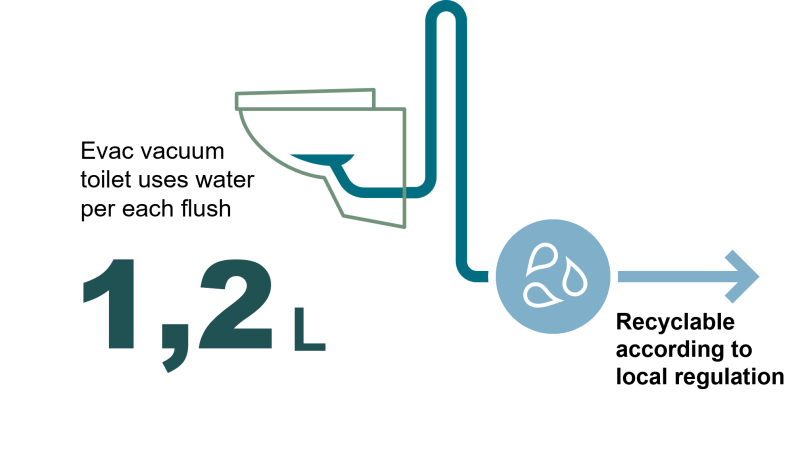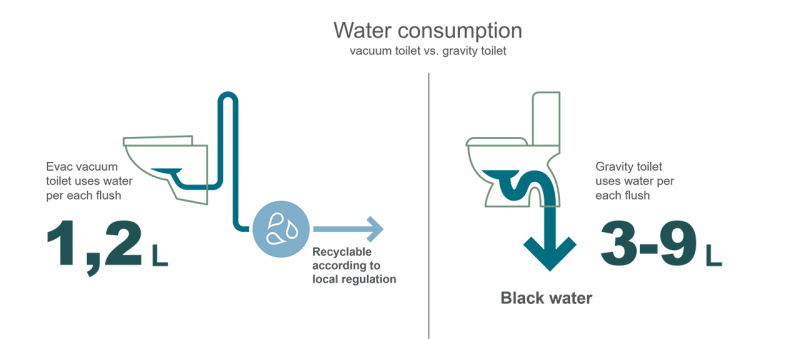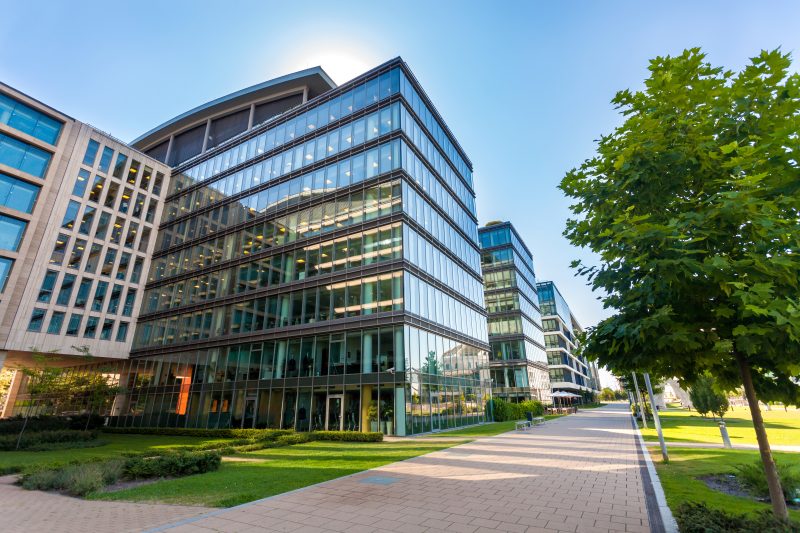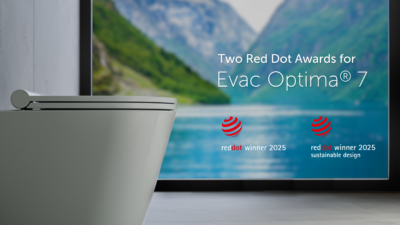Why vacuum systems? Part 1: A solution for conserving the world’s scarce water resources

With groundwater levels dramatically depleting and sources of freshwater shrinking across the globe, water scarcity is fast becoming one of the most pressing issues of the 21st century. Currently, 2.3 billion people live in water-stressed countries, of which 733 million live in high and critically water-stressed countrieslink. To build resilience against climate change and to serve a growing population, an integrated and inclusive approach must be taken in all industries.
In the building industry, the approach lies in finding greener and cleaner solutions that not only address the current problem areas but offer big-picture benefits that could influence the future of buildings. “The advantages and benefits of vacuum systems have been clear for years, but the need for it has never been more relevant than today when water saving is a crucial need, and you need to look at the big picture of sustainability,” reveals Joslyn Vermogen, who develops Evac’s business in the land-based sector in the EMEA region.
Water scarcity affects all of us. Currently, California is facing its worst water shortage in several years and many parts of the state are classified as in extreme drought, meaning the land does not have adequate water supplies to sustain agriculture and wildlife, according to the NIDISlink. On the other side of the world, there is a severe water shortage for example in the city of Bangalore, India, where there is evidence that with current consumption rates and the impact of pollution, the level of groundwater will be equal to zero in 2030. Municipalities are already relying on water tankers, and every new project must recycle water and reduce consumptionlink.
Save significant amounts of water with vacuum technology
Vacuum systems give you a competitive advantage for saving water in a surprisingly simple way. Instead of water, vacuum toilets use air to suction out waste and to transport it. They use minimal water only to rinse the bowl for hygiene.
“Each flush in a vacuum toilet is just 1.2 liters compared to standard dual flush that uses 3 to 9 liters of water per flush.,” says Vermogen. “For example, the government in India is planning to redevelop its railway stations by 2023link.”
“One railway station with 50 toilets, each being flushed 65 times per day, can save water with vacuum technology approximately 5700 m3 per year. By updating the toilet system with vacuum technology in 40 railway stations, the amount of saved water can fill over 90 Olympic swimming pools!,” Vermogen demonstrates.
The numbers speak for themselves – Energy-efficient vacuum collection systems can play an important role in conserving the world’s scarce water resources. In the next article we will open up the water situation in Brazil, where water shortage can be a severe issue. As saving water also leads to lower water and sewage costs, the return on investment of certain projects in Brazil has been less than 3 years. This will be addressed more in the next article, “Price of water”, stay tuned!
Welcome to read the first article in our series of opening the ROI of vacuum technology
At Evac we combine innovation with functionality to offer a green building solution that is efficient and lucrative at the same time. This is because we believe to be truly sustainable, it is also important to be economically feasible. Having successfully equipped over 4,500 buildings with our winning drainage system, we have proven time and again that it is possible to be both sustainable and enjoy a good return on investment.
In this article series, we take a deep dive into the ROI of vacuum technology. Follow the series to learn more about the different parts of ROI and how we will achieve our target to offer a return on investment in less than five years.
Tags
Share

Subscribe to our newsletter
We are eliminating waste, conserving water, mitigating emissions, and creating the foundations for our customers’ profitable and sustainable business on land and sea.
We invite you to join us on our mission to enable a future with no waste. To get frequent updates on the topic, please subscribe to our newsletter and join the journey with us.

Learn more about vacuum technology used in land-based industry
Choosing a more sustainable approach to wastewater and condensate collection can enhance the value of the building and increase revenues.
Smart vacuum solutions allow you to scale up the operations to meet high traffic needs. With quicker and easier installation, vacuum systems can drastically reduce remodeling times and ensure continuity of operations.


